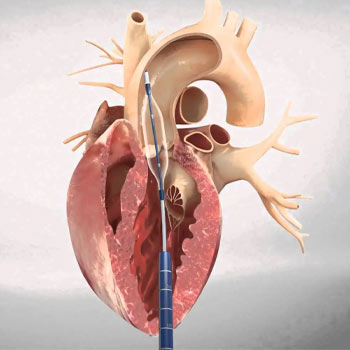What is Aortic Valve Replacement?
Aortic valve replacement (AVR) is a surgical procedure that involves replacing a malfunctioning aortic valve with a prosthetic valve. The aortic valve is one of the heart’s four main valves, located between the left ventricle and the aorta. It ensures one-way blood flow from the heart to the aorta and subsequently to the rest of the body. When the aortic valve does not function properly, it can lead to serious health issues. AVR is a common and effective treatment for aortic valve diseases, particularly aortic stenosis and aortic regurgitation.
Understanding Aortic Valve Diseases
Aortic Stenosis
This condition occurs when the aortic valve narrows, restricting blood flow from the left ventricle to the aorta. It is often caused by age-related calcification, congenital valve abnormalities, or rheumatic fever. Symptoms include chest pain, fainting, and shortness of breath.
Aortic Regurgitation
In this condition, the aortic valve does not close properly, causing blood to leak back into the left ventricle. It can result from conditions like endocarditis, rheumatic fever, or trauma. Symptoms include fatigue, irregular heartbeats, and shortness of breath.

Indications for Aortic Valve Replacement
AVR is recommended when
- The patient has severe aortic stenosis or regurgitation.
- Symptoms such as chest pain, syncope, or heart failure are present.
- There is evidence of left ventricular dysfunction or dilation.
- The patient is at risk of sudden cardiac death due to valve dysfunction.
Types of Aortic Valve Replacement
Surgical Aortic Valve Replacement
This traditional method involves open-heart surgery. The damaged valve is removed, and a prosthetic valve is sewn in place. SAVR is highly effective but requires a longer recovery period.
Transcatheter Aortic Valve Replacement
This minimally invasive procedure involves threading a catheter through the blood vessels to the heart. A collapsible valve is positioned inside the faulty valve and expanded. TAVR is suitable for high-risk patients who cannot undergo open-heart surgery.
Types of Prosthetic Valves
Mechanical Valves
Made from durable materials like titanium or carbon, these valves last longer (often a lifetime). However, patients require lifelong anticoagulation therapy to prevent blood clots.
Biological Valves
These valves are made from animal tissue (bovine or porcine) or human tissue. They do not last as long as mechanical valves but do not usually require long-term anticoagulation therapy.
The Procedure: Surgical Aortic Valve Replacement
- Preparation: The patient undergoes thorough preoperative assessments, including imaging studies (echocardiogram, CT scan), blood tests, and consultations with the surgical team.
- Anesthesia: General anesthesia is administered to ensure the patient is unconscious and pain-free during the surgery.
- Incision: A median sternotomy (vertical incision in the chest) is made to access the heart
- Cardiopulmonary Bypass: The heart is temporarily stopped, and a heart-lung machine takes over the function of the heart and lungs
- Valve Replacement: The damaged aortic valve is removed, and the prosthetic valve is sewn in place.
- Completion: The heart is restarted, the chest is closed, and the patient is taken to the intensive care unit for monitoring
The Procedure: Transcatheter Aortic Valve Replacement
- Preparation: Similar to SAVR, with additional emphasis on vascular access and imaging to guide the catheter
- Anesthesia: TAVR can be performed under general or local anesthesia with sedation
- Access: A catheter is inserted through a small incision in the groin, chest, or neck and guided to the heart
- Valve Deployment: The new valve is positioned within the old valve and expanded, pushing the old valve leaflets aside
- Completion: The catheter is removed, and the incision is closed. The patient is monitored closely post-procedure
Recovery and Aftercare
- Hospital Stay: Patients typically stay in the hospital for 5-7 days after SAVR and 2-5 days after TAVR
- Activity: Gradual increase in activity levels, with guidance from physical therapists. Full recovery may take several weeks for SAVR and a few days to weeks for TAVR
- Medications: Lifelong anticoagulation therapy for mechanical valve recipients. Biological valve recipients may require temporary anticoagulation and other medications to manage heart function and prevent infection
- Follow-Up: Regular follow-up appointments to monitor valve function and overall heart health. Echocardiograms, blood tests, and clinical evaluations are standard
Aortic valve replacement is a critical procedure for treating severe aortic valve diseases, significantly improving patients' quality of life and survival rates. Advances in surgical techniques and prosthetic valve technology have made AVR safer and more accessible, offering hope to many individuals suffering from heart valve disorders. Regular follow-up care and adherence to medical advice are essential for long-term success and optimal heart health
